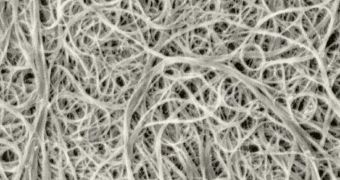According to the results of a new scientific study, it would appear that carbon nanotubes (CNT) can be successfully used to reduce the severity of the effects generally caused in the human brain by stroke.
The investigators who conducted the new work say that such an adverse event causes an interruption in the supply of blood making its way to the brain, which is the most complex and energy-demanding organ in the body.
Whenever this occurs, the cortex and underlying areas begin to suffer from a process called hypoxia, which means that they stop receiving sufficiently large amounts of oxygen to ensure that they function properly.
This leaves the cells themselves massively damaged after the stroke finishes. This is why many people who had such an attack are left with permanent scars, paralysis and other such conditions.
But researchers at the Chung Ang University in Seoul believe that the damage the brain suffers during an attack can be drastically reduced by adding carbon nanotubes to the cortex. This move helps protect brain tissue from any prospective damage caused by ischaemic stroke.
The team in South Korea, led by expert Sung Su Kim, believes that the new discovery might aid researchers in developing new strategies for mitigating the effects of stroke, and also for boosting the brain's self-healing power.
For the new study, experts used commercially available carboxylated nanotube, which they then exposed to nitrogen and hydrogen plasma. The result was the adding of a positively charged amine groups on the surface of each nanotube.
A week after they were injected in the brains of rats, ischaemic stroke was induced to the animals via surgery. When placed on a rotating rod following the operation, animal models treated with the CNT were a lot more likely to be able to keep their balance.
Additionally, microscope studies also revealed them to have a lot less brain damage following the stroke than their peers that did not receive the nanotube implants. According to Kim, the reasons why the nanostructures are protecting the brain are still unclear, Chemistry World reports.
“This should be elucidated by further study. We hypothesize that positive charged effect and high surface energy by amine-modifying provide a favorable environment for neurons, followed by enhanced tolerance of neurons against environmental stress,”” the team leader says.

 14 DAY TRIAL //
14 DAY TRIAL //